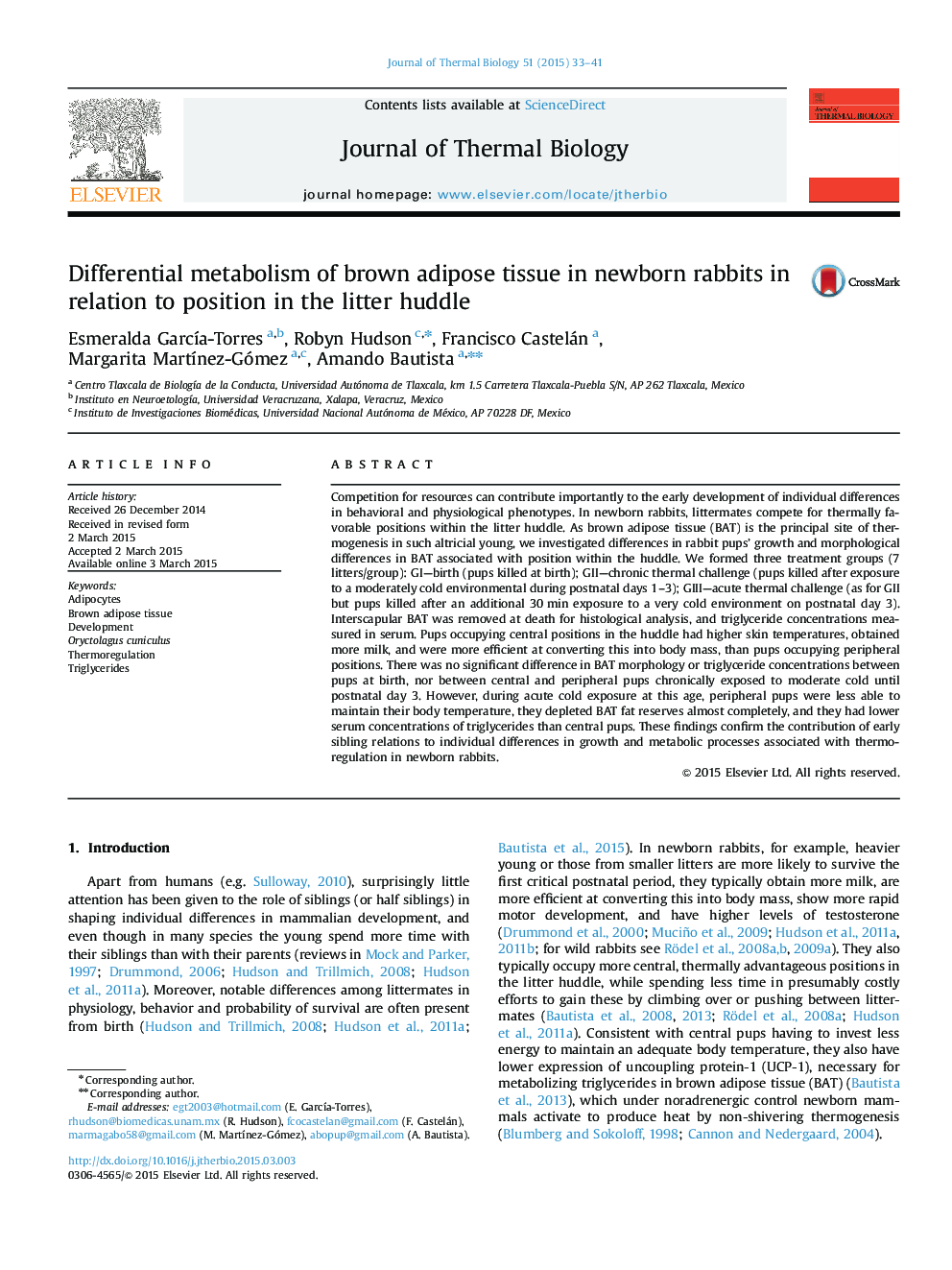| Article ID | Journal | Published Year | Pages | File Type |
|---|---|---|---|---|
| 2842801 | Journal of Thermal Biology | 2015 | 9 Pages |
•Newborn rabbits compete for thermally advantageous positions in the litter huddle.•Heavier pups are more successful in obtaining these.•Brown adipose tissue is the main site of thermogenesis in altricial mammalian young.•Heavy pups deplete these fat stores less under cold exposure than their lighter sibs.•Heavy pups develop under metabolically different conditions to their lighter sibs.
Competition for resources can contribute importantly to the early development of individual differences in behavioral and physiological phenotypes. In newborn rabbits, littermates compete for thermally favorable positions within the litter huddle. As brown adipose tissue (BAT) is the principal site of thermogenesis in such altricial young, we investigated differences in rabbit pups’ growth and morphological differences in BAT associated with position within the huddle. We formed three treatment groups (7 litters/group): GI—birth (pups killed at birth); GII—chronic thermal challenge (pups killed after exposure to a moderately cold environmental during postnatal days 1–3); GIII—acute thermal challenge (as for GII but pups killed after an additional 30 min exposure to a very cold environment on postnatal day 3). Interscapular BAT was removed at death for histological analysis, and triglyceride concentrations measured in serum. Pups occupying central positions in the huddle had higher skin temperatures, obtained more milk, and were more efficient at converting this into body mass, than pups occupying peripheral positions. There was no significant difference in BAT morphology or triglyceride concentrations between pups at birth, nor between central and peripheral pups chronically exposed to moderate cold until postnatal day 3. However, during acute cold exposure at this age, peripheral pups were less able to maintain their body temperature, they depleted BAT fat reserves almost completely, and they had lower serum concentrations of triglycerides than central pups. These findings confirm the contribution of early sibling relations to individual differences in growth and metabolic processes associated with thermoregulation in newborn rabbits.
